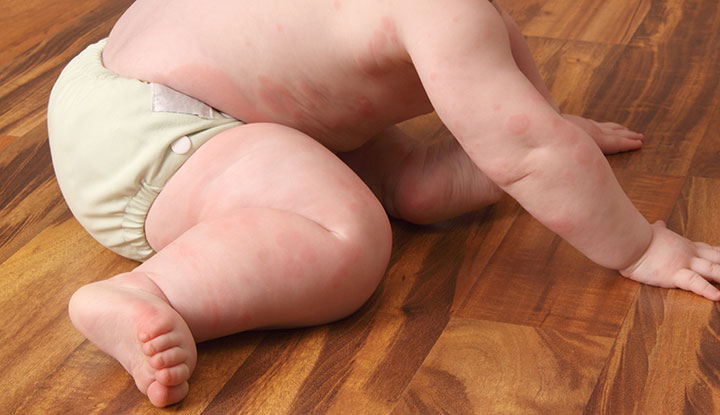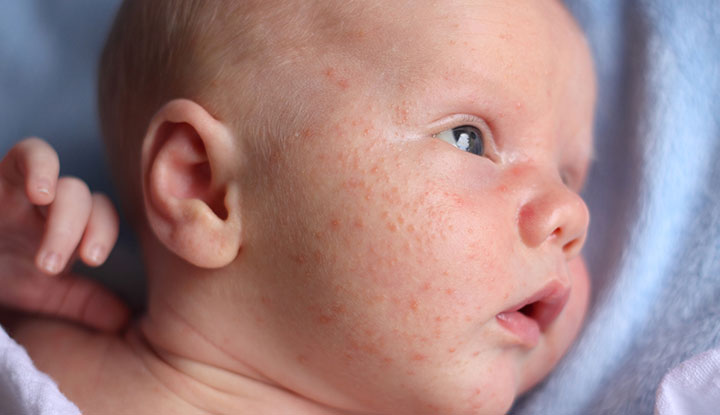Skin rashes are common in childhood. They can cause uncomfortable symptoms like dry, itchy skin and raised patches. But you don’t have to worry about most rashes in babies and kids. Most go away on their own or only need minor treatment. They’re rarely serious. But take your child to see their pediatrician if you have any concerns about a rash.
Advertisement
Cleveland Clinic is a non-profit academic medical center. Advertising on our site helps support our mission. We do not endorse non-Cleveland Clinic products or services. Policy
Most babies, toddlers and children will develop a skin rash at some point before they turn 18. They’ll probably have more than one. Fortunately, most childhood rashes aren’t serious.
Advertisement
Cleveland Clinic is a non-profit academic medical center. Advertising on our site helps support our mission. We do not endorse non-Cleveland Clinic products or services. Policy
Rashes in kids develop for various reasons. From allergic reactions to viral infections, you’ll likely see your child through a rash. The symptoms of rashes can differ, and so can their appearance. So, it’s important to know about the ones that can affect your child and how to treat them.
If your child has a rash, it’s probably nothing to worry about. But as their caretaker, you know them best. If something seems off, trust your judgement. A trip to your child’s pediatrician will put your mind at ease and provide your child with symptom relief.
Many different types of rashes can affect babies and children. Common skin rashes in children include:
“Dermatitis” is an umbrella term for any condition that causes skin inflammation (redness or skin discoloration). Types of dermatitis include:
Advertisement
Viral rashes in babies and children are common. Many different viruses cause them. Types of viral infections include:
Bacteria can also cause baby rashes. Types of bacterial infections include:
Fungi can also lead to rashes in kids. Types of fungal infections include:


Baby rash symptoms vary depending on which type of rash they have. Some cause no symptoms other than their appearance. Others can be irritating and painful. Symptoms may include:
Advertisement
The causes of childhood rashes vary based on the type. Causes may include:
Your child’s pediatrician will ask you questions about their rash, including:
Then, your child’s provider will perform a physical exam. They’ll carefully look at the type of bumps or spots on your child’s body. They’ll also look at the shape, color and other important features of the rash.
Treatment for childhood rashes varies based on the type and cause of the rash. Some childhood rashes will clear on their own. You can use at-home treatments to speed up the process. Treatments include:
Advertisement
For some rashes, your child will need prescription medication. Prescription medications include:
Most rashes are harmless. They may cause uncomfortable symptoms. But they should clear up, either on their own or with at-home treatment. Your child may need antibiotics or other prescription medication for certain rashes.
Some rashes can be more serious. Call your child’s healthcare provider if they have a weakened immune system and any rash. Also see their provider if your child’s rash:
Most rashes in kids don’t cause any serious problems or lead to complications. Your child’s rash may heal on its own or clear up with minor treatment. Certain rashes require treatment at your provider’s office. They can figure out the best option for your child.
Advertisement
Other rashes can mean your child has a severe illness, like measles. Measles isn’t just a rash. The condition can lead to life-threatening complications. See your child’s provider if they develop flu-like symptoms and a widespread rash.
You may be able to prevent your child from developing certain rashes. Have your child:
You can prevent some infections that cause rashes with vaccines. This includes chickenpox, measles and rubella.
Finding a skin rash on your child’s body can be alarming. You may wonder what caused it and if it’ll go away on its own or need treatment. Your child may seem uncomfortable, too. They may have dry, itchy skin or other symptoms. But kids get tons of rashes. Most of the time, you don’t need to worry. If you have any concerns, check in with your child’s healthcare provider. They can’t always determine the cause. But they’ll get your child started on any necessary treatment.
As your child grows, you need healthcare providers by your side to guide you through each step. Cleveland Clinic Children’s is there with care you can trust.

Last reviewed on 06/17/2025.
Learn more about the Health Library and our editorial process.